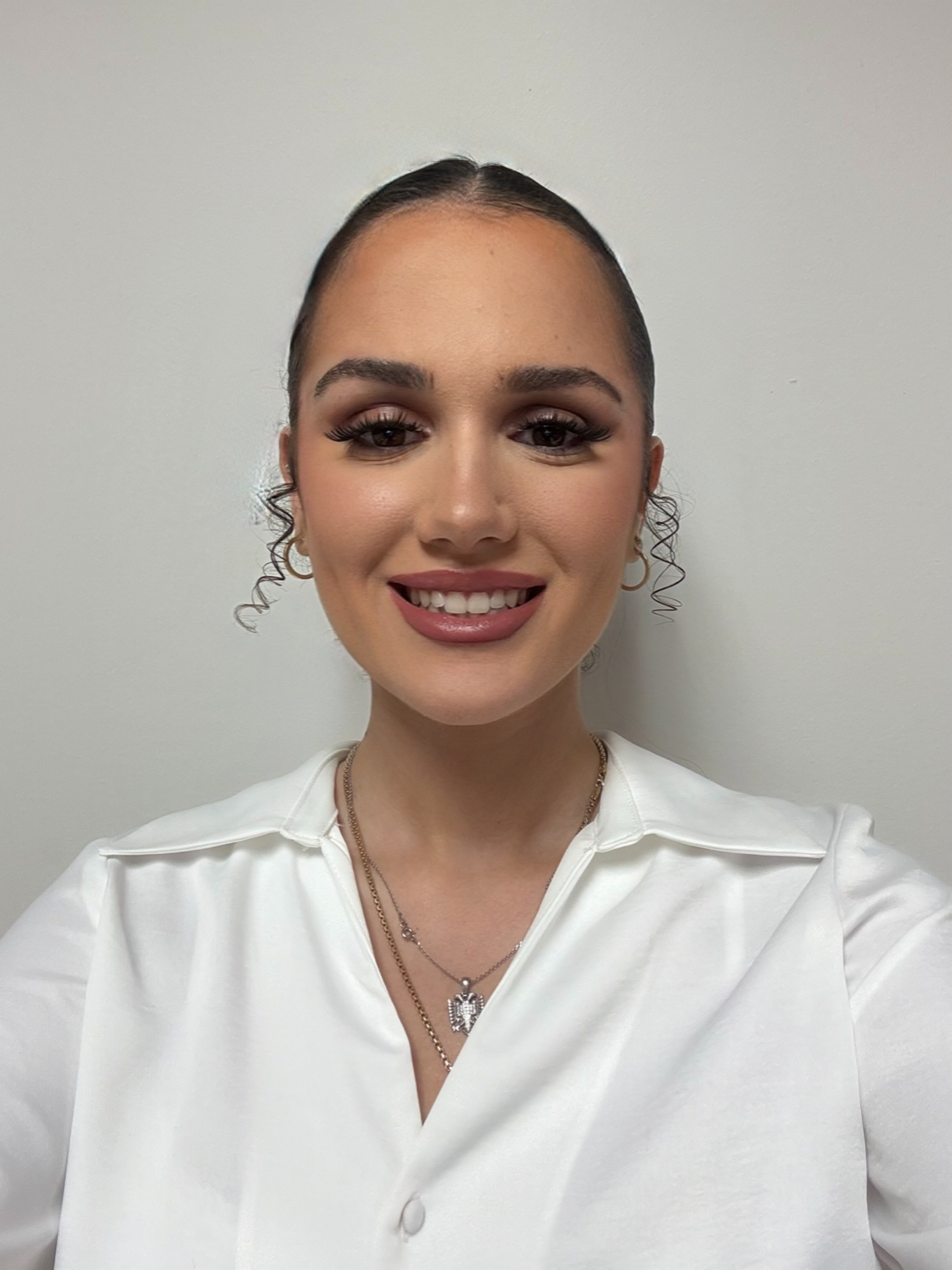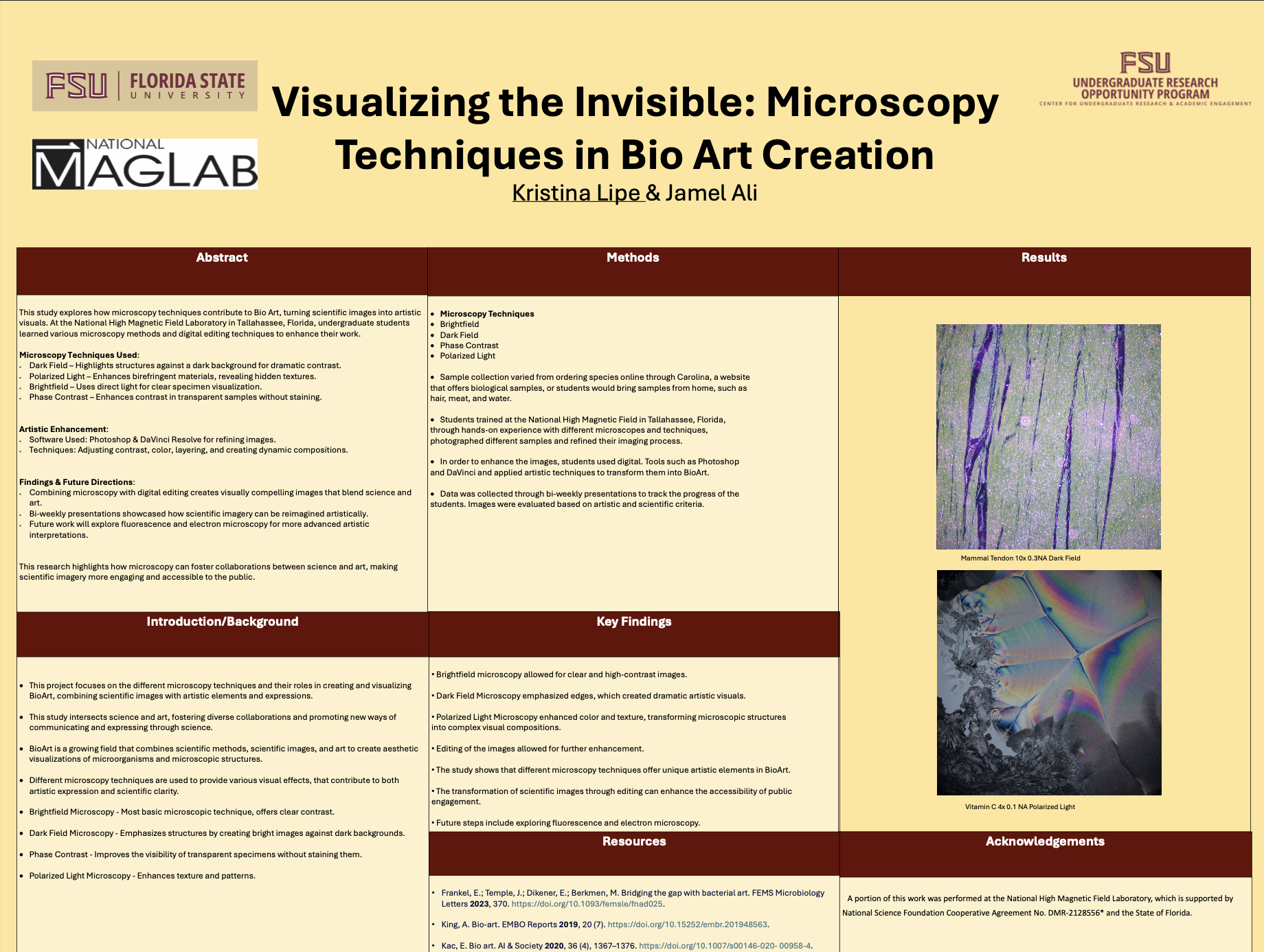Research Symposium
25th annual Undergraduate Research Symposium, April 1, 2025
Kristina Lipe Poster Session 2: 10:45 am - 11:45 am/ Poster #172

BIO
My name is Kristina, I am a first-generation college student at Florida State University. I am a Sophomore majoring in IMS- Clinical Professions on a pre-med path. My career goals include pursuing a career in the pediatrics field. I am passionate about giving back to my community through volunteer work and research.
Visualizing the Invisible: Microscopy Techniques in Bio Art Creation
Authors: Kristina Lipe, Jamel AliStudent Major: IMS - Clinical Professions
Mentor: Jamel Ali
Mentor's Department: Chemical Engineering Mentor's College: FAMU-FSU College of Engineering Co-Presenters:
Abstract
This project answers the research question: How do different types of microscopy techniques contribute to the visualization and creation of Bio Art? Investigating the different types of microscopy techniques is essential to making complex science more accessible and engaging by blending it with art. This research shows how microscopy, which is commonly used for scientific research, can also be a tool for scientific expression and education. During this research, undergraduate students were trained on the different types of microscopies on different microscopes, including Dark Field, polarized light, brightfield, and phase contrast, in the National High Magnetic Field Laboratory in Tallahassee, Florida. Students were also taught how to use different editing apps, including Photoshop and DaVinci, to be able to add artistic elements to their images. Students showed their progress bi-weekly through a series of PowerPoint on their images and knowledge. Results include different images of different samples ranging from everyday items to complex microorganisms photographed and edited in a way that makes them look appealing and artistic. The research findings show how different techniques of microscopy result in a new perspective of art on scientific images, highlighting the connection between science and art. The next steps include further study, practice, and research of different techniques when using microscopes, including fluorescent and electron microscopy, as well as making qualifying images public and accessible. The results suggest that different microscopy techniques can transform scientific images into visually appealing representations, making microscopic structures more engaging.
Keywords: BioArt Microscopy Art


